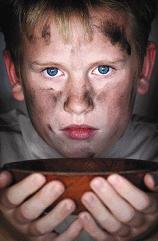More Than Half of US Public School Students Living in Poverty

For the first time in at least half a century, low-income children make up the majority of students enrolled in American public schools, according to a report by the Southern Education Foundation (SEF).
The percentage of public school students who are classified as low-income has risen steadily over the past quarter century, under both Democratic and Republican administrations. In 1989, under 32 percent of public school students were classified as low-income, according to statistics from the National Center for Education Statistics (NCES) cited by the report. This rose to 38 percent by 2000, 48 percent in 2011, and 51 percent in 2013.
These figures are the result of decades of deindustrialization, stagnating wages and cuts to antipoverty programs. Since the 2008 financial crisis in particular, the US ruling class, with the Obama administration at its head, has waged an unrelenting assault on the social rights of working people, carrying out mass layoffs, driving down wages, and slashing social services during the recession and the “recovery.” The SEF report makes clear that it has been the most vulnerable sections of society, including children, who have been made to bear a disproportionate burden due to these policies.
The study defines low-income students as those qualifying for either free or reduced-price lunches. Students from families making less than 135 percent of the federal poverty threshold are eligible for free lunches, while those making under 185 percent of the federal poverty line are eligible for reduced-price lunches.
The report was published last week in the form of an update to a 2007 study, entitled “A New Majority,” which warned that low-income students had for the first time in decades become the majority in the historically impoverished American South, and were well on their way to becoming the majority in the US as a whole. In 2006, the year covered by the report, low-income students constituted 42 percent of students enrolled at public schools. Seven years later, the figure has risen by a shocking nine percentage points.
The 2007 report noted that in 1959, “Historical correlations suggest that close to a majority of the school-age children in the South were in households living below the recently defined American poverty line.” It added, “Somewhere between 1959 and 1967, it is likely that for the first time since public schools were established in the South, low income children no longer constituted a majority of students in the South’s public schools.”
“By 1967, the percentage of low income children in the South and the nation had declined to unmatched levels,” the report continued, but noted that the improvement
“came to a halt in 1970 when the percentage of low income children leveled off and remained essentially constant over five years. In 1975 the trend lines for low income students in the South and across the nation began to creep upward. After 1980, the Reagan Administration convinced Congress to enact large federal cutbacks in anti-poverty programs, and the numbers of low income children in the South started to rise sharply.”
The vast historical retrogression exposed by the report is further emphasized in the breakdown by state. The report notes, “In 1989, Mississippi was the only state in the nation with a majority of low income students. It had 59 percent. Louisiana ranked second with 49 percent.”
Low-income students now comprise the majority in 21 states, and between 40 percent and 49 percent of students in 19 others. While all states had significant numbers of low-income students, the share of poor students in the South and West is “extraordinarily high.” It notes that “thirteen of the 21 states with a majority of low income students in 2013 were located in the South, and six of the other 21 states were in the West.”
Mississippi has the highest share of low-income students, at a shocking 71 percent, or nearly three out of four, in 2013. Second was New Mexico, where 68 percent of public school students are low-income. These are followed by Louisiana, with 65 percent; Arkansas, with 61 percent; Oklahoma, with 61 percent; and Texas, with 60 percent. California, the country’s most populous state, has 55 percent of its public school students in poverty.
Poor students require far more resources than their affluent peers if they are to keep up. But rather than provide resources according to need, the Bush and Obama administrations, under the “No Child Left Behind” and “Race to the Top” programs, have channeled resources away from schools with a high share of students in poverty, which are declared to be “underperforming.”
The SEF report warns, “With huge, stubbornly unchanging gaps in learning, schools in the South and across the nation face the real danger of becoming entrenched, inadequately funded educational systems that enlarge the division in America between haves and have-nots.”
The study is the latest in a series of reports showing the increasingly desperate social conditions facing children in the United States.
In September, the US Department of Education released statistics showing that the number of homeless children increased by eight percent in the 2012-2013 school year, compared to the year before. There were 1.3 million homeless children enrolled in US schools, a figure that is up by 85 percent since the beginning of the recession.
In April, Feeding America reported that 16 million children, or 21.6 percent, live in food insecure households. The share of all people in the United States who are food insecure has increased from 13.4 percent in 2006 to 21.1 percent in 2013.
In April 2013, the United Nations Children’s Fund released a report showing that the US has the fourth-highest child poverty rate among 29 developed countries. Only Lithuania, Latvia and Romania have higher child poverty rates. The US fell behind even Greece, which has been devastated by years of austerity measures dictated by the International Monetary Fund.

